An evergreen plant, the so-called mahogany. Evergreens: beauty all year round
Even the most beautiful landscape design of a summer cottage or garden plot in winter, it loses its charm, becoming gray and inexpressive. It seems that in a country with a harsh winter, this should be taken for granted, but fortunately, there are evergreens for the garden that can delight us all year round with their brightness and riot of colors. And you need to take care of their landing now, before the onset of frost. Today we will tell you about how to use evergreen trees and shrubs in the design of a private house site.
Choosing Evergreens ornamental plants, many prefer traditional needles. And this is not surprising, because conifers look great throughout the year, are easy to cut, so they can be used to create various "living" sculptures and hedges. However, in addition to needles, there are a lot of horticultural crops that feel great even in the most severe frosts. Such plants include heather or wintering rhododendrons, privet, mahonia, periwinkle, pachysandra, cherry laurel, ivy, etc.
evergreens photo
Evergreens for the garden photo
In the landscape design of the garden, evergreens can be used for zoning the territory of the site, creating decorative frames, growing “living” borders, hedges and sculptures, as well as masking household objects. Much less often, such plants act as a solo object, however, when right choice places and competent compilation of the overall ensemble, these cultures will look great as single decorations.
Plants that endure winter are appropriate not only in open areas, but also in flower beds and flower beds. In discounts, they can be combined with almost any annual or perennial crops, creating various patterns and ornaments, using them both as an addition and as a background. It is better to plant evergreens in flowerbeds so that they are the main decoration of the composition, otherwise in winter these crops will not be noticeable against the background of “dormant” vegetation.
Evergreen ornamental plants
evergreen conifers
Evergreens for loggias and balconies
Some plants belonging to the evergreen species will be of interest not only to gardeners, but also to those who want to decorate their balcony or loggia in winter time. Evergreens for a balcony in autumn can be bought in a tub or pot, and then transplanted into a suitable container. The most unpretentious plants, ideal for landscaping a balcony, include: euonymus, recumbent gaultheria, pyracanthus, buxus, juniper, thuja, etc. Each of these plants is able to please its owners with different colors, flowering and foliage shape. For example, the euonymus is distinguished by variegated purple-pink leaves, the lying gaultheria is decorated with bright scarlet berries throughout the winter, and the color of thuja and juniper can consist of all shades of green.
Evergreens for the balcony
"Live" fence or hedge of evergreens
Even the most elegant garden fencing cannot compare with the beauty of the hedge, which becomes the main decoration of any landscape. Depending on the desired height of the hedge, to create it, you can use low-growing evergreens, which include quince, yew repandes, yew elegantissima, mahonia, etc., or plants whose height can reach more than three meters (barberry, chibushnik, felt cherry, etc.). The most common evergreen hedges include various types of barberry, spruce, hawthorn, boxwood, and rose hips. All these plants tolerate frosts well, grow quickly, are not picky about the composition of the soil and weather conditions, and are also easy to cut.
If a "living" hedge is used to decorate the territory, then plants or shrubs are planted in one row. If the hedge serves as a drawstring or fence, then a denser planting in two rows will be required. Sometimes several types of plants are combined into a single composition.
Instead of creating a "living" evergreen hedge, you can resort to decorating an already finished fence with climbing plants. Climbing evergreens for the fence perform their decorative function all year round almost without changing its appearance. Plants that quickly and tightly entwine a fence or any other support include ivy, wisteria, parthenocissus, etc. In addition to the fence, these plants can be used to decorate many landscape objects - arbors, trellises, outbuildings, etc.
Evergreens for borders
Border plants are ideal for creating borders between different areas of the garden, marking paths, paths and flower beds. But, in addition to their decorative value, these plants are necessary to prevent the growth of weeds and the growth of lawn grass. in spring and summer time"Live" borders delight gardeners with a dense crown and bright flowering, however, with the onset of winter, many of them lose their attractiveness, destroying unity landscape design. To make “live” borders delight you all year round, choose evergreen border plants, which include boxwood, honeysuckle, dubrovnik, Japanese euonymus, etc. Some plants, such as boxwood and dubrovnik, can be trimmed to the required height.
Evergreens for the garden can decorate even the most perfect landscape composition. However, in order to give maximum expressiveness to the landscaping of the garden, plants should be dispersed throughout the site, planting them in small groups in each separate zone. In addition, when planting plants in groups, combine varieties with different colors, otherwise winter gardening will look gloomy and the same.
Gardeners - professionals and amateurs - work hard on their plots, decorating them not only with fruit-bearing trees, but also with bright flower beds and bizarre ones. Of particular note are evergreen trees and shrubs, thanks to which the space near the dacha or cottage will look spectacular both in summer and in winter.
The choice of such coniferous and deciduous perennials suitable for our climate is quite extensive, and every summer resident can choose evergreens for his garden to his liking.
Three large groups can be distinguished among them:
coniferous evergreens
A classic example of evergreen trees are a variety of conifers: pines, cedars, spruces. On their plots, gardeners can plant specially bred decorative dwarf varieties, such as unpretentious mountain pine 1-3 meters high. Some of its varieties have a creeping shape and can be used to decorate built ones.
Very attractive evergreens for the garden are coniferous shrubs, which differ in picturesque appearance and unpretentiousness.
These, first of all, include various types of juniper (common, Cossack, Chinese), which can be used not only in the form of individual bushes, but also creating special zones from them.

juniper
This shrub, propagated by seeds or cuttings, loves the sun, so you need to plant it in open places. It is undemanding to soils (it is enough to feed it with nitroammophos twice a year) and to a lack of moisture: juniper should be watered only in severe drought.
This plant feels good not only in middle lane Russia, but also in Siberia or the Urals. Only in the first year after planting, these bushes require additional shelter, subsequently they can withstand even the most severe frosts.
Deciduous evergreens
A huge variety of evergreen deciduous plants can be seen in warm regions, such as the Mediterranean or the Sochi region; however, among them there are also species that thrive in temperate climates and even in more severe conditions.Among them, we can note the holly mahonia: very beautiful evergreen for garden. In the spring, she pleases gardeners with her flowers collected in long brushes; in summer - they are replaced by edible berries, and in autumn the wide-brimmed leaves of this bush are painted in bright colors.
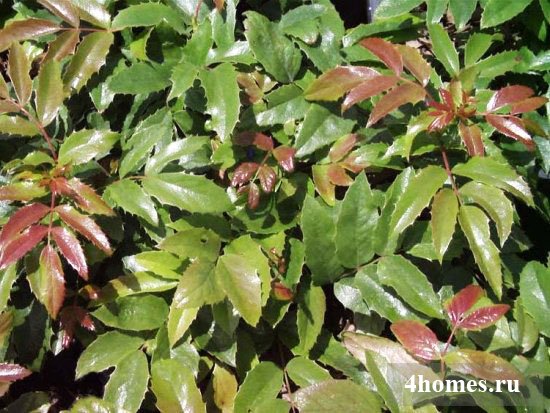
mahonia holly
The height of this type of mahonia is 0.6-1.8 meters, while other varieties of this plant can grow up to 3 meters. At the same time, all of them are distinguished by enviable unpretentiousness, preferring partial shade and humus-rich soils with moderate watering. Almost all varieties of mahonia tolerate cold well, but it is better to cover young plants with spruce branches.
A picturesque rhododendron can also become a real decoration of the site, the bushes of which are covered in abundance with bright flowers in summer. There are many species of this plant, from which you should choose varieties whose homeland is the Far East. This shrub 0.5-1.8 meters high can be used both separately and in groups, in the form of shoots.
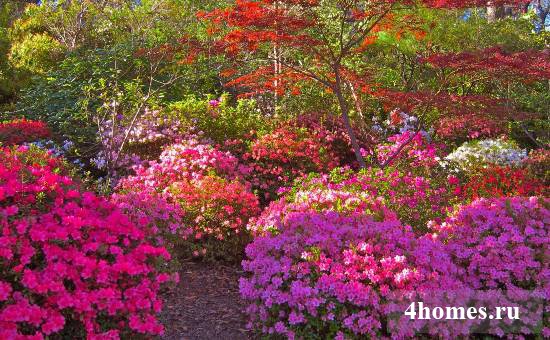
rhododendron
It should be noted that rhododendron is quite demanding on growing conditions; he especially likes partial shade and humid air. That is why it is good to plant rhododendrons near natural or artificial reservoirs, for example, on a site near. For wintering, you should first of all insulate the root system of this bush, covering the soil with a layer of dry leaf or peat.
herbaceous evergreens
This type of representatives of the flora includes various herbaceous bushes with evergreen wintering leaves: bergenia, hellebore, arabis, dryads and others. All these plants have a height of 0.3-0.6 meters and are usually used to decorate alpine slides and rockeries. As a rule, these bushes are very unpretentious, do not require special care and are propagated by seeds or division of bushes.Evergreens will allow you to enjoy the splendor of your garden all year round. Let's get acquainted with the different options for landscaping with the help of such plants!
1. Plant them in flower beds and flower beds.
There are hundreds of varieties of evergreens. Both conifers and evergreens, for example, boxwood. While some grow into huge trees, others, like the dwarf spruce 'Nidiformis', are ideal for flowerbeds and flowerbeds. Try planting them between colorful plants to give your eyes a rest.
By the way, in order to fulfill your dream and make the garden beautiful, you need to buy various coniferous plants and evergreen deciduous plants in good condition. A very rich selection of dwarf, large-sized, variegated, bonsai, creeping coniferous and deciduous plants. After all, you need high-quality planting material?

2. Hide the foundation of the house - beautiful and practical!
Pictured above is 'Blue Shag' Weymouth Pine.
Because these plants retain their foliage throughout the winter, the low-growing evergreens are ideal for planting around a home's foundations to hide it throughout the year.
Be bold in your choice of shapes and colors, but choose compact varieties so they don't outgrow the space allotted to them. 'Blue Shag' Weymouth Pine, 'Montgomery' Blue Spruce and 'Silver Whispers' European Cedar are examples of these compact and interesting conifers that pair beautifully with bright summer flowers such as 'Profusion White' Zinnia.
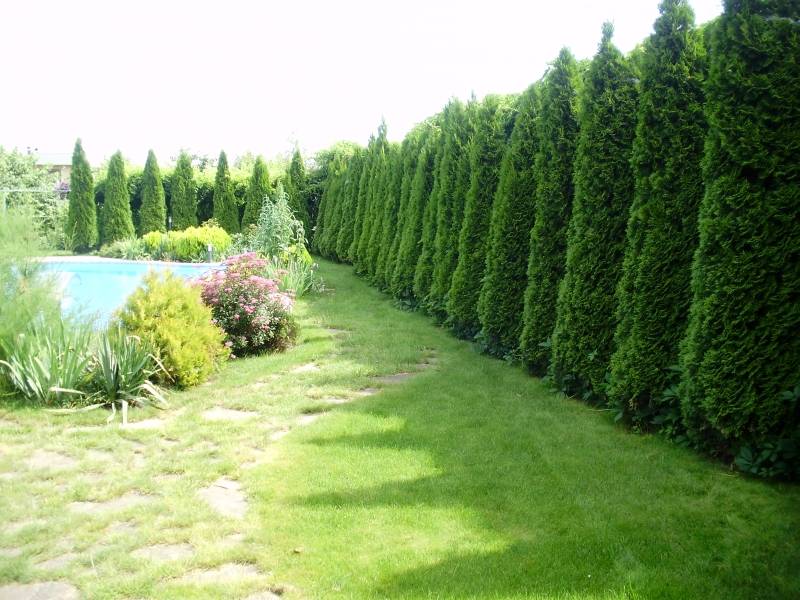
3. Creating private areas - so that the neighbors do not stare!
One of the most common uses for evergreens is as a screen. Tall, columnar varieties of thuja, yew, and juniper are great for small spaces. If you have enough space, include broadleaf evergreens such as rhododendrons as well.
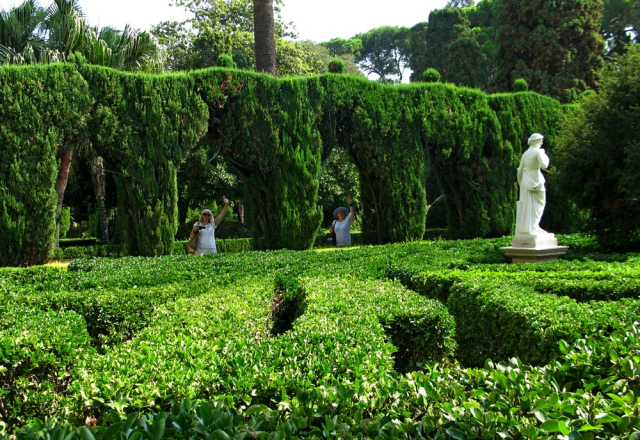
4. Make living arches out of coniferous plants- and the garden will become richer!
Some evergreens (such as juniper, yew, cypress) have a dense crown, making them ideal for shearing and making fun shapes. Try growing two trees about a meter apart and pull them together to create a unique arch.
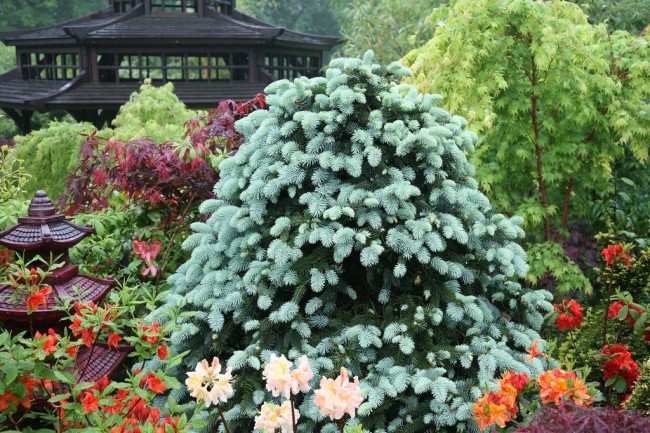
5. Enjoy a relaxing background
Make a beautiful background for your flower beds and flower beds. Choose high grades with dark green foliage that accentuates the vibrant flowers. Or choose cultivars with colorful foliage (such as blue spruce) to add an interesting twist to your plantings.
Pay attention to the shape of the plants. For example, tall, upright evergreens (such as narrow-crowned blue spruce 'Iseli Fastigiate' and juniper 'Medora') create a wonderful contrast with globular perennials and grasses.
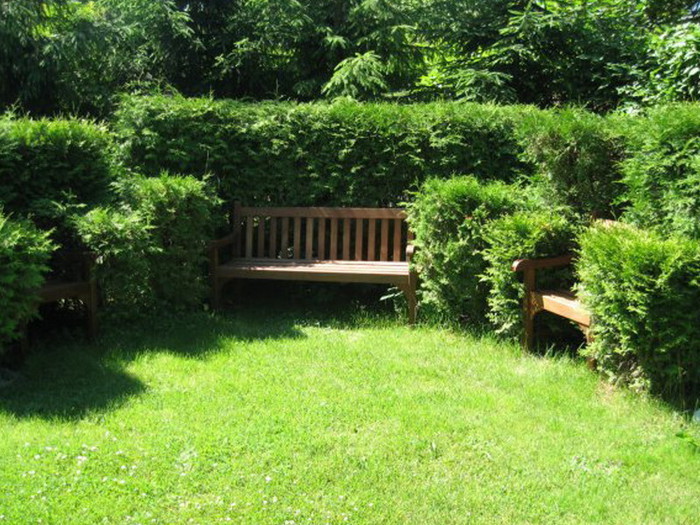 6. Make a "room" in the garden - a haven for introverts. With a cup of tea and a favorite book.
6. Make a "room" in the garden - a haven for introverts. With a cup of tea and a favorite book.
Plant four medium-sized, upright evergreens, such as 'Conica', in the corners of the square to create a garden 'room'. Even if you do not surround this area with bushes or other plants as walls, this place will become more intimate and inviting.
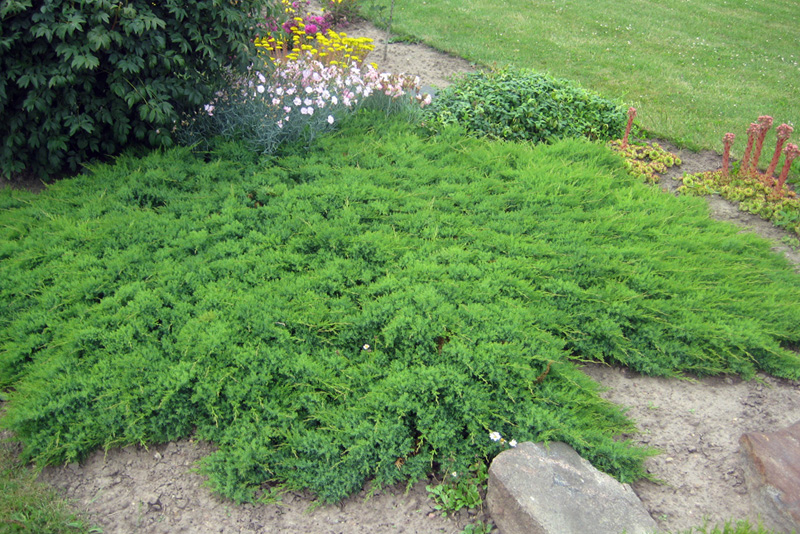
7. Cover the ground with a "fluffy carpet"!
Enjoy a beautiful carpet by letting the sprawling evergreens become groundcovers. Creeping blue spruce (such as 'Procumbens'), junipers or creeping pines are perfect for year-round filling of space with color and interesting texture.
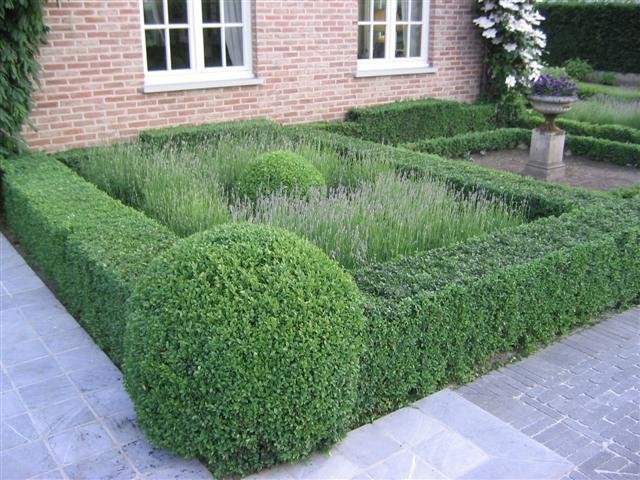
8. Show off your personality with evergreens!
Boxwood, yew and juniper lend themselves well to pruning. Take advantage of this and cut them into fun shapes to add some fantasy to your garden. Low boxwood hedges become more interesting with a rounded corner. Or try cutting in spirals and other shapes.
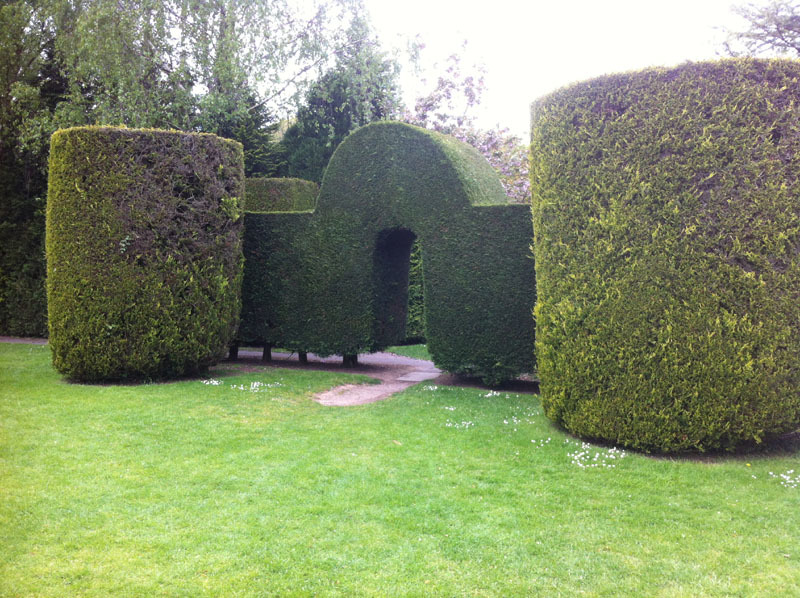
9. Make an entrance to your site.
Plant beautifully trimmed evergreens (such as juniper) on either side of the gate or along the path to the house to make the entrance more formal. Don't forget annual pruning to keep them in shape, but the effect is well worth the effort.
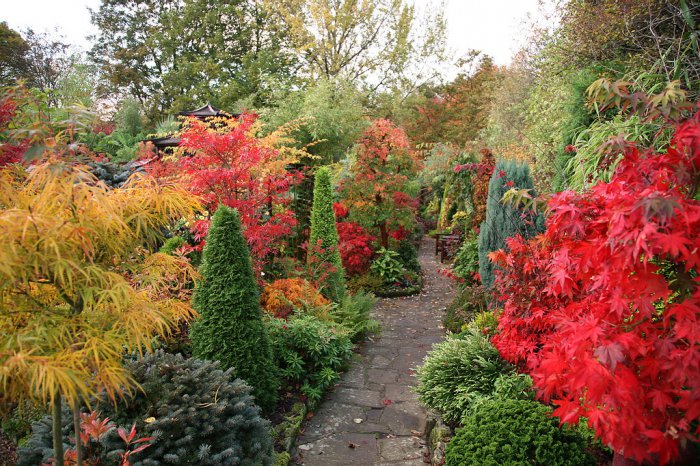
10. Bring out autumn colors
A surefire way to bring out the fall colors of the foliage in your garden is to plant vibrant plants next to evergreens. For example, Engelmann spruce, Korean fir 'Horstmann Silberlocke' and dwarf blue spruce 'Corbet' look stunning next to orange and red bushes, and the vibrant yellows almost sparkle against the dark green.
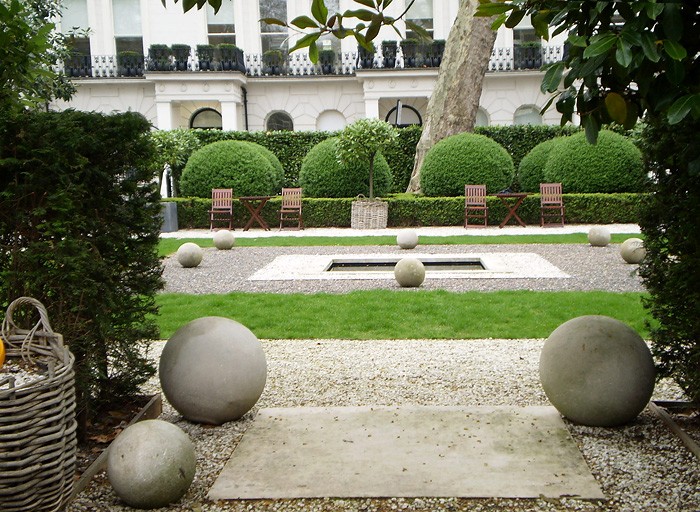
11. Integrate your garden
Making a garden design cohesive is easy by picking a theme and repeating it. For example, you can use the shape of a circle - the rounded boxwood will echo the stone spheres along the path and the shape of the gazebo in the distance. The same can be done with a different shape or color.

12. Make a container garden showy
Large, sculpted evergreens can be ideal container plants if you find a large enough container. For example, black austrian pine will bring a splash of color and privacy to a deck, patio, balcony, and even a driveway.

13. Just add flowers
Incorporate flowering evergreens into your landscape to add drama to your garden. Rhododendrons, Calmia latifolia and Pieris add color and splendor to any garden.

14. Reduce Your Heating Costs
Protect your home from winter winds, pulling out heat by planting a windproof wall. Plant evergreen trees around your home or on the side of the prevailing winds and see your heating bills go down.
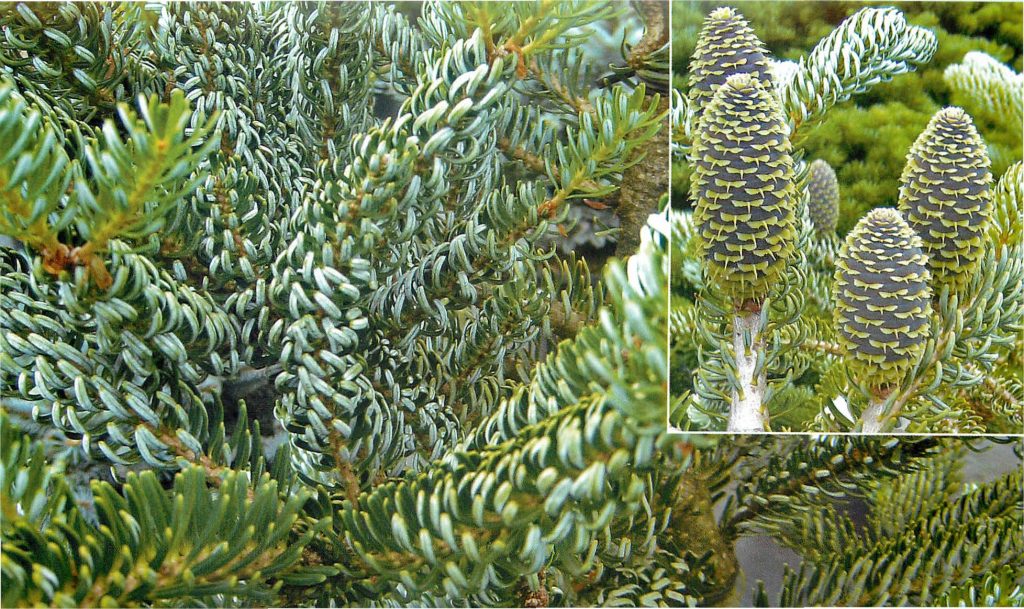
15. Be original!
Above in the photo is Korean fir 'Horstmann's Silberlocke'.
Choose a special, striking evergreen (such as golden pine 'Chief Joseph', pseudo-hemzies 'Emerald Twister' with twisted trunk and winding branches, or variegated Korean fir 'Horstmann's Silberlocke') and make it the focal point of your landscape. Such eye-catching plants do not need neighbors.
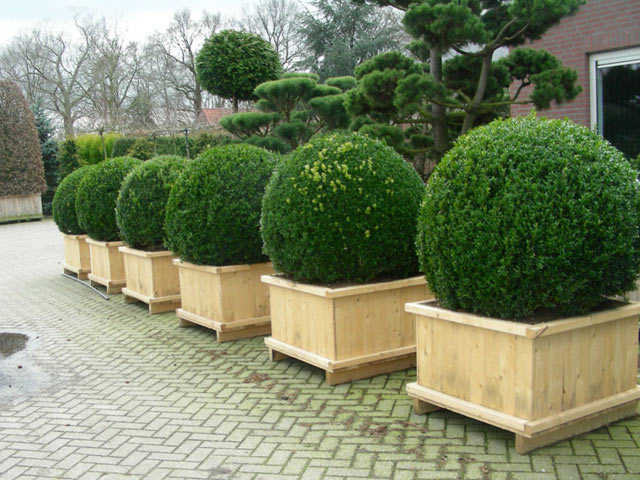
16. Make your front garden attractive
The space in front of your house will look great all year round if you fill it with a collection of evergreens. Choose varieties with different shapes, colors and textures and your front garden will be attractive without a single flower.
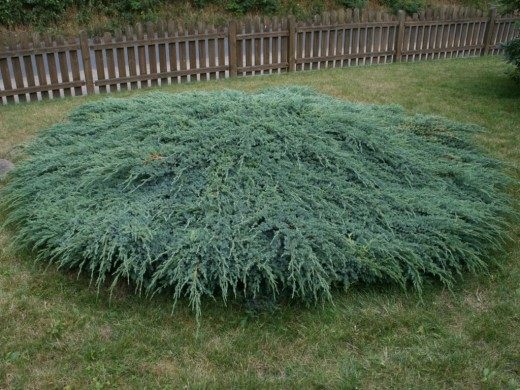
17. Stop mowing on slopes
Save hours of tedious mowing on hard-to-reach slopes by planting evergreens (such as the 'Blue Rug' juniper). They will look good all year long, stop erosion and suppress most weeds so you can just sit back and enjoy the view.
Do GOOD, SHARE this page in the social. networks
In contact with



